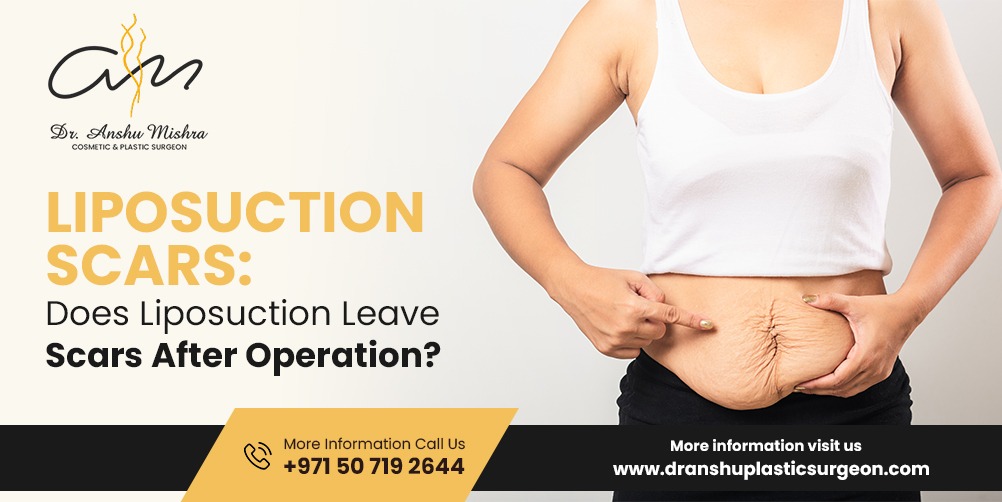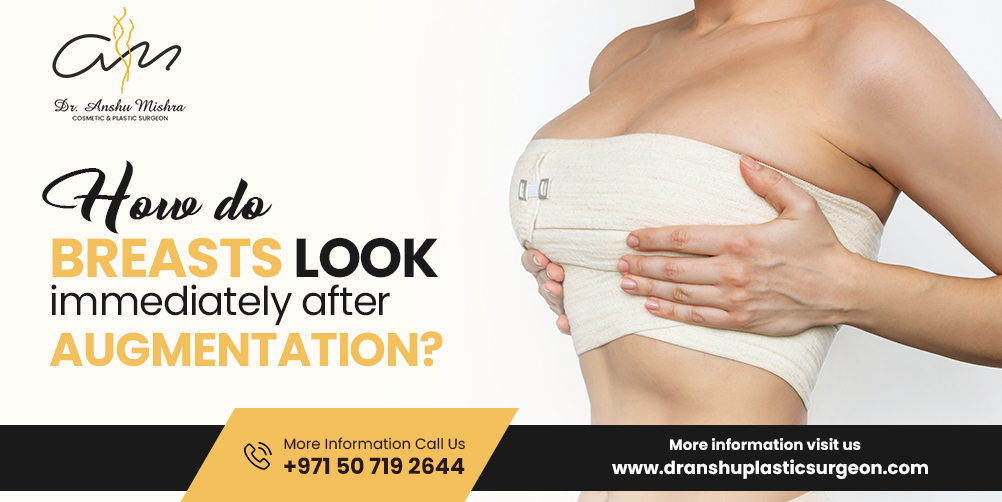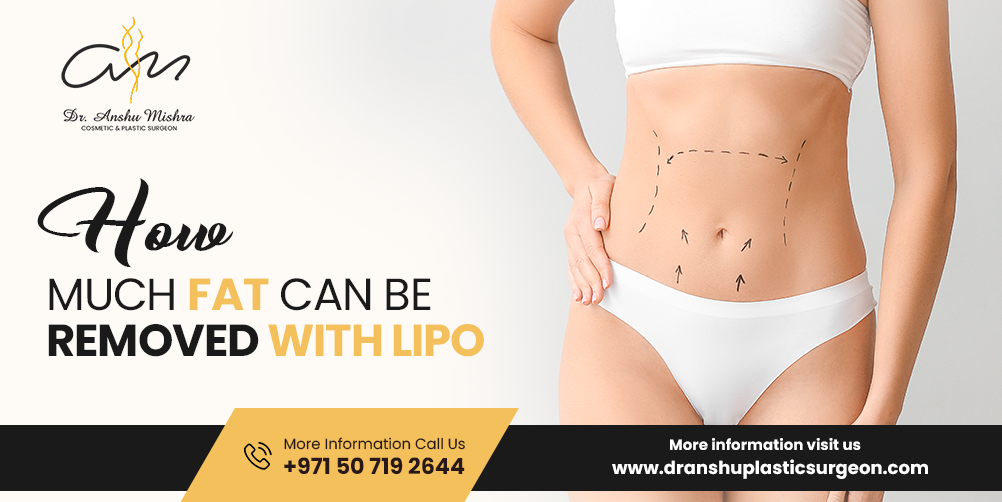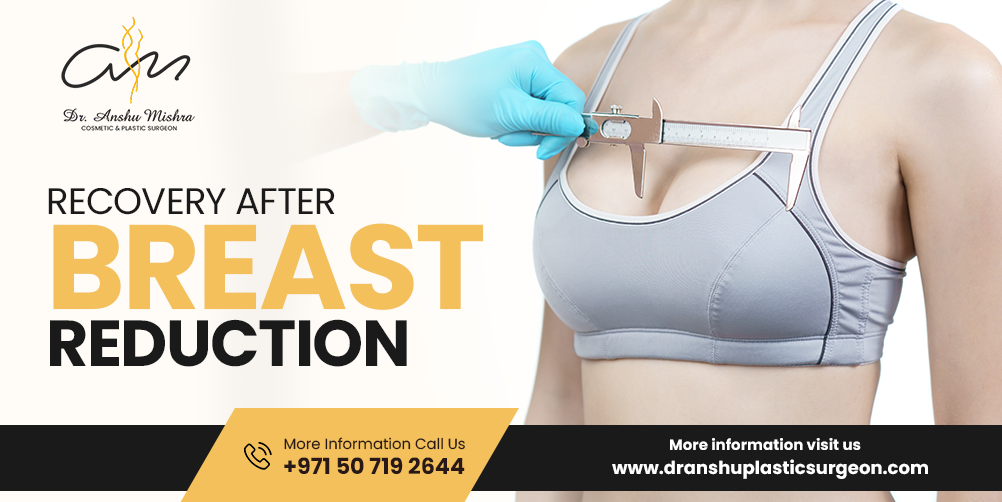Liposuction is a popular cosmetic procedure that helps individuals achieve their desired body shape by removing excess fat from specific areas. Many people seek liposuction to achieve a slimmer figure but worries about potential scarring after the procedure are common. Despite its popularity for delivering transformative results, concerns about visible scars linger among prospective patients. As individuals weigh the benefits of a more sculpted physique against the possibility of visible scarring, it’s essential to understand the realities of this cosmetic enhancement journey.
In this blog, we’ll delve into the topic of liposuction scars, addressing common questions and providing insights into the recovery process.
Table of Contents
ToggleWhat Causes Liposuction Scars?
Liposuction scars are primarily caused by the surgical incisions made during the procedure. Liposuction involves the insertion of a small tube called a cannula through these incisions to remove excess fat from specific areas of the body. While the incisions are typically small and strategically placed to minimize visibility, they still penetrate the skin and disrupt its integrity, resulting in scar formation as part of the body’s natural healing process.
Factors such as the technique used, the skill of the surgeon, and individual healing characteristics can influence the size and visibility of liposuction scars. Although liposuction is considered minimally invasive compared to traditional surgical procedures, the formation of scars is an inherent aspect of any surgery involving incisions.
Related Blog: Liposuction After Pregnancy: Importance, Recovery and More
Types of Liposuction Scars
The size and visibility of liposuction scars can vary depending on several factors, including the technique used, the skill of the surgeon, and individual healing processes. Generally, there are two main types of liposuction scars:
- Small Incision Scars: Liposuction incisions are typically small, ranging from a few millimeters to a centimeter in length. These incisions are strategically placed in inconspicuous areas to minimize their visibility. Over time, these scars usually fade and become less noticeable.
- Hypertrophic scars: Hypertrophic scars are characterized by raised, red, and sometimes itchy areas of scar tissue that develop at the incision sites.
- Keloid scars: Keloid scars are thicker and extend beyond the boundaries of the original incision, often becoming larger than the initial wound.
In some cases, complications such as infection or poor wound healing can lead to more prominent scarring. However, with proper post-operative care and adherence to the surgeon’s instructions, the risk of complications can be minimized.
Lifestyle Management for Liposuction Scars
While it’s natural to be concerned about scarring after liposuction, there are steps you can take to help minimize their appearance and promote healing:
- Follow Post-Operative Instructions: Your surgeon will provide specific instructions on how to care for your incisions after liposuction. This may include keeping the incision sites clean and dry, avoiding strenuous activities, and wearing compression garments to support the healing process.
- Stay Hydrated and Eat a Balanced Diet: Proper hydration and nutrition are essential for promoting skin health and supporting the body’s healing process. Drink plenty of water and eat a balanced diet rich in vitamins, minerals, and protein to aid in tissue repair.
- Avoid Sun Exposure: Direct sunlight can darken and prolong the healing process of scars. Protect your incision sites from sun exposure by wearing sunscreen and clothing that covers the treated areas when outdoors.
- Consider Scar Management Products: There are various scar management products available, such as silicone gel sheets or creams, which can help soften and flatten scars over time. Consult with your surgeon before using scar treatment products to ensure they are safe and appropriate for your situation.
It’s important to remember that the healing process takes time, and scars may continue to improve over several months to a year following liposuction. Be patient and diligent in following your surgeon’s recommendations for optimal results.
Related Blog: Recovery From Fat Removal Surgery – Liposuction
Clinical Treatment Options for Liposuction Scars
In addition to post-operative care and scar management techniques, there are clinical treatment options available to further improve the appearance of liposuction scars. These treatments are typically performed by dermatologists or plastic surgeons and can be tailored to individual patient needs. Here are some common clinical treatment options for liposuction scars:
- Laser Therapy: Laser treatments such as fractional laser resurfacing can help reduce the visibility of scars by stimulating collagen production and promoting skin regeneration. This non-invasive procedure can effectively smooth out scar tissue and improve overall skin texture.
- Steroid Injections: For hypertrophic or keloid scars, which are raised and may be itchy or uncomfortable, steroid injections can help flatten the scar tissue and reduce inflammation. This treatment is often performed in multiple sessions and can lead to significant improvement in scar appearance.
- Microneedling: Microneedling involves using a device with fine needles to create tiny punctures in the skin, stimulating the body’s natural healing response and promoting collagen production. This can help soften the appearance of scars and improve skin texture over time.
- Dermal Fillers: In some cases, dermal fillers may be used to fill in depressed or atrophic scars caused by liposuction. By injecting a filler substance beneath the scar, the skin’s surface can be leveled, resulting in a smoother appearance.
- Surgical Revision: For more severe or persistent scars, surgical scar revision may be recommended. This involves removing the old scar tissue and repositioning the incision to create a less noticeable scar. Surgical revision is typically performed under local anesthesia and may be combined with other scar management techniques for optimal results.
Before undergoing any clinical treatment for liposuction scars, it’s important to consult with a qualified healthcare provider to determine the most appropriate approach based on your individual case. Your provider will assess the severity of your scars and discuss the potential risks and benefits of each treatment option to help you make an informed decision.
Conclusion
In conclusion, while liposuction can leave scars, they often fade over time with proper care and management. By following post-operative instructions, maintaining a healthy lifestyle, and considering clinical treatment options when necessary, individuals can minimize the appearance of liposuction scars and achieve smoother, more even skin texture. It’s important to consult with a qualified healthcare provider to explore the best treatment options for your individual case. With the right approach, you can enjoy the benefits of liposuction with minimal scarring.
If you’re considering liposuction or have concerns about existing scars, schedule a consultation with Dr. Anshu Mishra today. With expertise in cosmetic surgery and a commitment to personalized care, Dr. Mishra can help you achieve your aesthetic goals with confidence. Take the first step towards a more confident you by contacting Dr. Mishra’s office to book your appointment.
FAQs
-
What Factors Determine the Severity of Liposuction Scars?
The surgical method, the surgeon’s ability, and the patient’s recovery process are some of the variables that might affect how severe liposuction scars are. Smaller incisions are used in procedures like tumescent liposuction, which typically result in less noticeable scarring. Furthermore, individuals with darker skin tones could noticeably change in pigmentation, while others might get elevated scars like keloid or hypertrophic scars. Scar severity can be greatly reduced with good post-surgical care; nonetheless, more noticeable scarring may result from causes such as infection or delayed healing.
-
Can Scarring Depend on the Type of Liposuction?
Yes, there can be variations in the degree of scarring caused by different liposuction procedures. While more recent methods like ultrasound- or laser-assisted liposuction employ smaller incisions, traditional liposuction usually requires somewhat bigger incisions. These kinds of minimally invasive procedures are intended to lessen the stress associated with fat removal as well as the amount of scars. Speak with a surgeon about your options to help you choose a procedure that will minimise scarring while also achieving the desired result.
-
How Can I Lessen the Scars after Liposuction?
There are a few ways to reduce how noticeable liposuction scars are:
- Observe Post-Op Instructions: For best recovery, you must follow your surgeon’s instructions on post-operative care. This involves keeping the incision sites clean, using compression clothing, and avoiding intense activities that may strain the treated regions.
- Utilise Scar Management Products: Over time, products like silicone sheets or lotions made specifically for scar care can help flatten and soften scars. To be sure the items are appropriate for your recovery stage, it is crucial to speak with your physician before utilising them.
- Keep the Scars Out of the Sun: UV radiation can colour scars and impede their healing process. To stop hyperpigmentation and other sun-related damage, cover the affected areas or use sunscreen.
-
Are There Any Treatments for Scars after Liposuction?
Yes, some clinical procedures can lessen the visibility of liposuction scars if they are more noticeable than desired.
- Laser therapy: By encouraging skin renewal and collagen formation, this treatment helps lessen scar tissue. Scar tissue can be smoothed out over multiple sessions with non-invasive laser treatment.
- Steroid Injections: These work well for hypertrophic or elevated scars, such as keloids. Although numerous treatments may be necessary, steroid injections can decrease inflammation and flatten scar tissue.
- Microneedling: By making microscopic punctures in the skin, this technique encourages the body’s healing reaction. It can lessen scarring and enhance skin texture over time.
- Surgical Revision: This procedure can be a possibility for those with very extensive scarring. For a more refined outcome, this entails eliminating the current scar and re-closing the incision.
-
Will Liposuction Scars Eventually Go Away?
The majority of liposuction scars gradually disappear. Even though they could be somewhat noticeable at first, careful post-operative care and therapies like laser therapy or scar creams can accelerate their removal. Scars usually fade considerably over many months, and it may take up to a year for them to fully mature.
-
Are scars left by all forms of liposuction?
Indeed, all liposuction operations need tiny incisions to place the cannula, which may result in scarring. These scars, nevertheless, are usually rather slight. Tiny cannulas are used in procedures like Vaser liposuction and laser-assisted liposuction, which leads to even tiny incisions. Scar visibility is influenced by some variables, including skin type, healing capacity, and post-operative care. To make scars almost undetectable, Dr. Anshu Mishra meticulously positions incisions in discrete areas.
-
What is the size of the scars following liposuction?
Depending on the treatment and region being treated, liposuction incisions are typically tiny, ranging from 5 to 7 millimetres. Usually made in naturally occurring skin creases or places obscured by clothes, these incisions are intended to be as undetectable as possible. When properly cared for, these scars frequently disappear over time and are hardly perceptible.
-
Are the incisions visible and where are they usually made?
The treatment area determines where the incisions should be made. For instance:
- For abdominal liposuction, incisions are done close to the hip or belly button.
- For butts or thighs, incisions are made in the groin or underneath the buttock fold.
- Incisions on the neck or chin are concealed behind the jawline or the ears.
Skilled surgeons such as Dr Anshu Mishra, ensure that incisions are placed in less obvious places, including the body’s natural folds or wrinkles.
-
How can I reduce the visibility of scars following liposuction?
Take these actions to reduce scars:
- To avoid infection, keep the wounds clean.
- Use silicone gel sheets or scar-reduction treatments as prescribed by your doctor.
- Because UV rays can discolour scars, avoid direct sun exposure.
- After healing, gently massage the scars to encourage improved collagen dispersion.
- To guarantee appropriate recovery, use compression garments as directed.
-
How does skin type affect the healing of scars?
Scar healing is greatly influenced by skin type. For instance:
- Darker skin tones are more susceptible to keloids or hyperpigmented scars.
- Redness around scars may last longer in those with fair skin tones.
Talk to your surgeon about your skin type so they can customize your aftercare to maximize healing and lower the risk of scarring.
-
Do men and women who get liposuction have different scarring?
The incisions may be placed differently to accommodate natural curves and clothing preferences, even though the healing procedure is the same for both sexes. For example:
- Male abdominal liposuction incisions may be made lower to prevent them from interfering with swimwear.
- For cosmetic purposes, women may have incisions concealed behind bra straps or bikini lines.
-
Can scarring be worsened by postoperative complications?
Yes, more obvious scars can result from problems including infections, delayed healing, or poor wound care. For instance:
- Because infections harm tissue, they can result in raised or discoloured scars.
- Wider scars are the result of overstretching the skin.
- Scar healing may be impacted by improper clothing use.
These risks are reduced if you adhere to all post-operative recommendations given by your surgeon.

